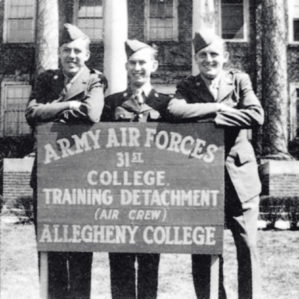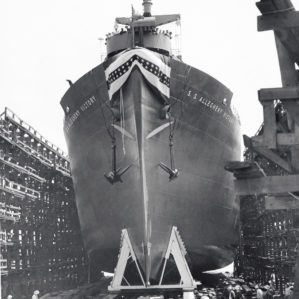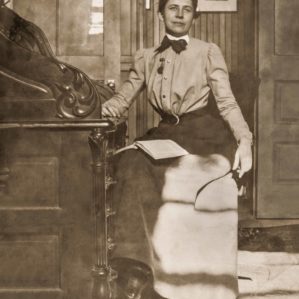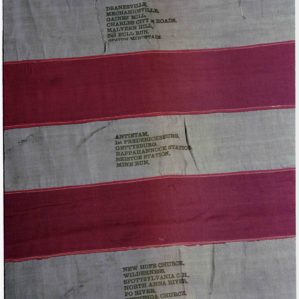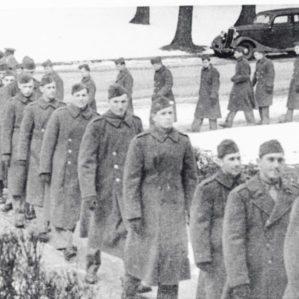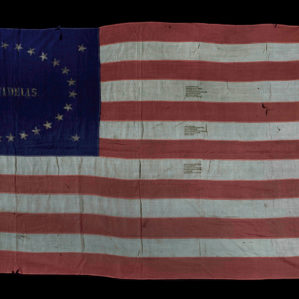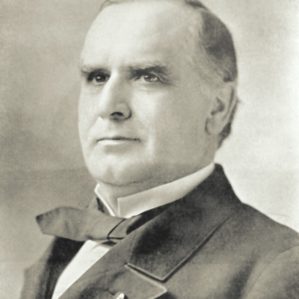A Short History of Allegheny College’s Relationship with the U.S. Military Services
Allegheny College has a 200-plus year history of association with the military in all major branches of services: the Army, the Maritime Services (Navy, Merchant Marine, and Coast Guard), the Marine Corps, and the Air Force (including its predecessor the Army Air Corps). Over the years, this symbiotic relationship has helped all the participating institutions and individuals. Hosting training ranging from informal camps to a formal ROTC program ensured Allegheny College met its student enrollment needs during times of war. In return, Allegheny provided well qualified, physically fit candidates for service and leadership needs — to wit, five Allegheny alumni were promoted to Army general rank during or after the Civil War, two were promoted to Air Force general rank during or after the Vietnam War, and one was promoted to Marine Corps general during the more recent Global War on Terrorism.
One Civil War veteran from Allegheny ultimately rose to be commander in chief (President McKinley). The sharp decline in enrollment caused by the Civil War and enlistments was a contributing factor to Allegheny’s decision in 1870 to admit women. Even a president of Allegheny, William Crawford, took a leave of absence for four months to support the American Expeditionary Force in France during World War I, as a religious resource. In appreciation for this ongoing relationship, two transport ships during World War II were named: the SS Ida Tarbell, to honor Allegheny’s most famous female graduate, and the SS Allegheny Victory.
One graduate from the first class at Allegheny went on to a merchant marine career and was presumed lost at sea. Dozens of Allegheny alumni fought on both sides of the Civil War, and Allegheny has in its possession the College Company battle flag (on the Union side). A few Allegheny alumni fought Pancho Villa and served in the Spanish American War. During that time, the cadets in the military department chose uniforms of powder blue with gold trim and buttons, which were adopted as Allegheny College colors. The colors were ultimately revised to the more available navy blue and gold. The fitness of these cadets influenced the establishment of the physical education requirement for all graduates for over 100 years until it was abolished in 1999. Thirteen students died serving in World War I. In World War II, Allegheny was one of the few schools to offer a civilian pilot training program, graduating 42 pilots, two of whom were women. As a result of the Korean War, in 1951 the Air Force established an ROTC unit at Allegheny. It was mandatory for freshmen men until 1965 and was closed by the Air Force in 1977 due to budget cuts.
Over the years, faculty have debated both sides of the issue about training future candidates to a war effort within the context of a liberal arts education. At various times, the faculty have voted to substitute military training courses for academic credits, have redesigned curricula in math to teach munitions trajectory and surveying, biology to teach hygiene and medical aid, geology to teach topography of belligerent countries, and chemistry to teach control of munitions manufacture and high explosives. As enrollment declined during the major world wars, faculty were freed up to serve as well.
In today’s all-volunteer service, formal relationships between Allegheny College and the military are fewer. Students can choose to participate in the Army ROTC program, hosted by Edinboro University. Veteran students and their families are eligible for scholarship programs managed through the Yellow Ribbon Program and the GI Bill. Veterans from all branches of the service can be found on and off campus as students, faculty, staff, alumni, and trustees.
Learn more about Veterans Benefits Administered by the Allegheny College Financial Aid Office

